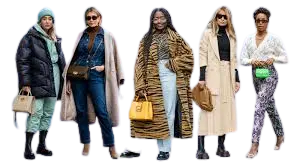Patent Law, Patent Protection, and Intellectual Property in the Fashion Industry
A patent in the fashion business usually refers to a privilege that has been legally granted to protect an original design or creation. Patents for novel textile technology, distinctive clothing styles, or even specific manufacturing techniques may fall under this category. In the fashion sector, patents are frequently sought after to stop others from stealing or duplicating a specific design or technology without authorization. In this article, we discuss Patent Law, Patent Protection, and Intellectual Property in the Fashion Industry.
In the high-stakes and oversaturated fashion industry, one of the primary methods for clothing companies to gain a competitive advantage over their competitors is to be creative, original, and innovative.
When companies take the time-consuming and expensive steps to create designs that will separate themselves from other brands, it is a good idea for them to obtain Intellectual Property protection over their work. Failing to do so puts them in a potentially catastrophic situation: at risk of being ripped off by copycats with no legal recourse to enforce their rights. More specifically, clothing brands, fashion designers, and garment manufacturers should turn to Patent Law to protect their work.

Types of Patents in the Fashion Industry
There are two types of patents relevant to the fashion industry: Utility and Design patents.
- A utility patent protects the structure, composition, or function of an invention, and generally lasts 20 years from the earliest filing date.
- A design patent protects the visual and ornamental characteristics of articles of manufacture, and generally last 15 years from the earliest filing date.
To summarize the key difference between the two: a “utility patent” protects the way an article is used and works (35 U.S.C. 101), while a “design patent” protects the way an article looks (35 U.S.C. 171).
While utility patents are the most common type of patent used and are generally more valuable, design patents are preferable in certain situations. Design patents are typically cheaper and easier to receive than most utility patents. The fashion industry presents a situation in which design patents may offer the best path toward IP protection.
Design patents are not allowed to have any functional protection. Utility patents are not allowed to have any aesthetic protection. If you want to have both, you have to apply separately.
Traditionally, however, fashion doesn’t mean functionality. For most clothing designers, their overarching goals are to appeal to their clientele, to retailers, or to editorial outlets by coming up with the most desirable aesthetic creations. Design patents are the best vehicle to monetize for those designers.
Which designs should you patent?
Design patents generally tend to be far less common in the fashion industry than other forms of intellectual property such as copyrights and trademarks for two main reasons. First, fashion is an industry that is always changing. Brands have to alter their designs for each season, trend, or consumer need. Since patents take a while to be issued, it might not make sense to patent very seasonal designs. Second, patents are far more expensive than the other types of IP protection, and not all companies have the resources to obtain them.
Patents, then make sense in specific situations. For example, brands that have significant staples that will be fashionable for a while should seek patent protection, but brands that merely churn out seasonal designs with high turnover would not need to. Additionally, brands with very unique and very high-demand consumer goods that could easily be copied by overseas manufacturers would be wise to seek patent protection.
Should I patent under utility or design what says Patent Law in the Fashion Industry?
If you are a designer wondering how to protect your products, ask yourself one key question to get started: “Is this design providing a functional utility benefit?” If there is even a hint of something beneficial or functional about what you’ve created, you should patent your design under utility. The next steps toward obtaining a utility patent would be to confirm the eligibility, novelty, non-obviousness, and utility of your design with a licensed patent attorney. However, if the answer to this question is ‘no’, then you’re good to go with a design patent.
A good rule of thumb, says JD Houvener, USPTO Certified Patent Attorney with Bold Patents, is that “articles of clothing should generally be protected under design patents unless they serve a functional aspect. If the article of clothing has any type of novel and purposeful functionality- such as a breathable fabric, a unique attachment, or a special pocket- it should first and foremost be protected as an object of utility. If the most important aspect of the clothing is the ornamental appearance, it can be patented as a design.”
Looking forward, it seems that the trend of design patent applications will continue to increase exponentially. The number of design patent filings as a whole has been on the rise since the 1960’s. In the past several years, the number of design patent filings has been growing by at least 1,400 filings each year, with a particularly strong rise between 2014 and 2015. If this is the case for the future, then this is one trend that clothing companies must be sure they don’t miss.


